How to Find Your Purpose | In-Depth Self-Reflection Framework
An in-depth self-reflection questionnaire and Purpose story framework for humans and brands — in 10 steps.

This article was written by Erwin Lima, storytelling and innovation philosopher, author and owner of www.lifebeyond.one.
Hello, my fellow seeker. How are you feeling today?
It’s a lot that’s going on around us, ain’t it? And it’s no coincidence it feels as if everything is continually speeding up. A lot of us are feeling a growing desire for more stability, more growth, and more freedom. How can we find that? With all that’s going on around us, how can we stay sane, be happy, and achieve our goals?
What we need is a Purpose; a story that helps us make sense of ourselves, and our place in this world. Whether in our personal lives, in business, or even in society at large.
That story is what this article is here to help you get clear.
How this article will help you find your Purpose
I’ve just finished writing my new book: “Legend Storytelling: How to Find, Communicate and Live your Purpose”.
In that book, I offer you science-backed insights and steps to creating your Purpose Story, which works for growth-minded human beings as well as entrepreneurs — and which translates to your Purpose-driven Brand Story, if you’re approaching this from the perspective of a brand.
The following is an excerpt from that book. I hope it will be useful to you, and would love to hear from you if it is.
In this article you’ll find:
- A useful definition of Purpose and how to break it down into a Vehicle and Next Step;
- The 10 steps and an in-depth questionnaire to do thorough self-research and self-reflection to help you find your Purpose;
- A Storytelling framework to help you write your own Purpose or Legend Story.
Context: a moment in time
Once again, we find ourselves in some pretty uncertain and strange times. A pandemic. Lockdowns.
The effects of this much social and physical isolation and too much digital living are certain to be very detrimental to our mental health and physical wellbeing.
A lot of us are feeling a growing desire for more stability, and more freedom. We need to take back our sense of control. We need to cultivate that stability, control, and freedom within ourselves, first.
How do you make sure you or your people won’t be one of the millions of people worldwide who will likely fall into burnout, depression, or other mental illness this year?
How do you stay connected to that which matters most, and to the people that matter most to you? How do you communicate effectively, and use your time, attention, and technology to stay sane, be happy, and achieve your goals?
How can we level up as human beings?
What we need is a Purpose; a story that helps us make sense of ourselves and our place in this world.
Finding Purpose can give you more than just a sense of direction in life. Read more about the benefits, value and ROI for you or your brand in terms of mental and physical health, productivity and growth, here: The Benefits of Purpose and Storytelling.
Alternative and quick-fix ways to find your Purpose
Disclaimer: The information in this article will help you find your Purpose, but it will not help you do so in five minutes. Come on, people — this is your Highest, over-arching goal in life we’re talking about, not a test to see which type of bicycle helmet fits your personality best.
There are various sources online that claim they can help you find your Purpose in five minutes, by answering one question on paper over and over until you start to cry (basically), or in 30 minutes, by answering six questions. If you’re looking for a quick fix or quick primer; by all means check those out.
They just might be what you need to get to your next step. And if so, more power to you. Maybe the following short video by one of my favorite authors, Mark Manson, will help you on your way.
However, if you’re looking for something a little more thorough, that ends up with something that resonates with you on a deeper level — read on and do the exercises I offer you below. You can do all of these in one day, but I strongly advise you to take your time and take it easy with these. Give it time, space, and air to breathe.
Take out about two weeks, and then take out about 30 minutes each day for those two weeks. Oh, and make sure you have your notebook ready. And a close friend or two on standby, to help you out here and there.
Let’s get this done, people.
Definitions: Vehicle, Next Step, and Purpose
Ok. So.
At some point about eight years ago, I myself decided I wanted to be a writer. This brought financial stability and some measure of professional success to my life, for the first time. It made me feel incredibly good about myself.
It was the process that led me to that decision — which to this day has been one of the single most wonderful decisions in my life — that I reverse-engineered to create one part of my model and framework Purpose Alignment; the process of how to define your Purpose.
Another part of the method came from a series of interviews with some 20 tech visionaries I did back in 2016–17. And another part is simply my knowledge from studying developmental psychology and reading a sh*t ton of research, and my experience as a marketing professional, specializing in Purpose-driven Brand Stories.
Purpose, Vehicle, Next Steps: Definitions
First, here you will find some explanation about defining Purpose, Vehicle, Next Steps, and Milestones. This will help you understand the exercises later on better: it will help you know what you’re working toward.
Definition of Purpose
For the workings of Purpose Alignment, Purpose is defined as follows:
“The reason for which something is done or created or for which something [or someone; individual or organization] exists — as defined by the person or organization herself, in consultation with stakeholders. Our Purpose Statement should be a high-level goal of value creation, that may itself evolve with time and experience. It is something that holds value for self and for something greater than self.”
Purpose is defined as a Why- and the Vehicle as a How-statement. The Next Step is defined as a What-statement.
Let me give you an example of a Purpose statement. Why do I exist, and why do I do the things that I do? What value do I aim to create for others, at the most fundamental level? In my case, as a writer and marketing philosopher, this could sound something like:
“My Purpose is to seek knowledge and insights from a variety of sources, to turn that into useful information and insights that help myself and others around me to grow and maximize their own innate potential.”
In short:
“My Purpose is to inspire and help other people to find, communicate, and live their Purpose.”

Me, being all Purpose-y
I truly believe this is my way to make the world a better place. Now, How do I work towards my Purpose? What is my main skillset? What is my Vehicle?
My How or Vehicle could sound something like this:
My Vehicle
“I write, and sometimes I speak publicly. I analyze and combine thoughts, insights, feelings and other information into nuggets of storytelling that I distill into written text, i.e. blogs, books, poems, or into presentations or trainings.”
Next step
Our Purpose statement further needs to be translated into a High, Hard goal — Our “Next Step”, with measurable KPI’s, and then again into milestones, and then finally into daily actions and habits. What will I achieve? What value will I create for the world? A “Next Step” is an evolutionary step toward meeting our purpose, that can realistically be measured and achieved within the space of one year to five years.
A Next Step may sound like: “By December 31st, 2021, I want to be [high-over, inspirational yearly goal statement]. I will feel [ self-reflective emotional goal], I will achieve [measurable KPI], and people will rate me [stakeholder metric].”
In my case, this could sound something like: “By December 31st, 2021, I want to be a (self)published, successful and inspiring writer. I will feel like I am a successful and inspiring writer, I will achieve book sales exceeding 10.000, and ten people I don’t know will compliment me because my work inspired them to realize their own potential.”
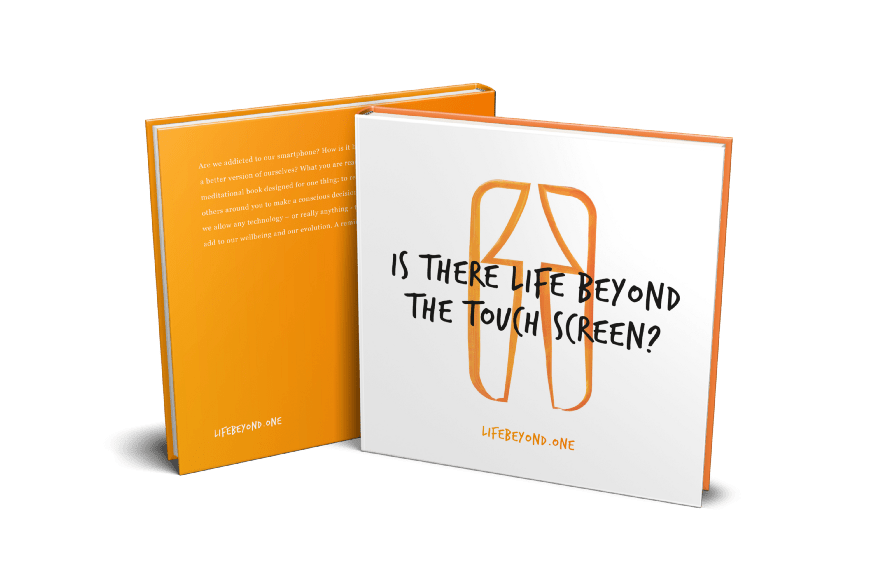
It doesn’t matter if your Next Step is to be a published writer, a rich entrepreneur, an artist; “the Uber or Netflix of…” — whatever your company does and cares about; an expert baker of muffins or an intermediate speaker of French.
The point is that your Next Step is an evolutionary yet realistic step from where you are now, and that the progress is defined such that it is measurable.
Finding or redefining your Purpose
Now let’s get to work. Defining Purpose (or; re-defining it as in a rebranding project) is done in two phases of aided and guided Self-reflection. Phase 1 is about Research & Analysis. Phase 2 is about Synthesis, Validation & Refinement. This process works best if you give it time.
Take it easy. Read the first exercise, calmly contemplate the questions. Take a walk in nature, sit by the water, talk to a friend. Stare out of a window. Meditate, do sports, sleep on it. Feel how your body feels; what is your gut telling you? Then come back and answer the questions of the next part. Then start reading the next exercise, and so on.
Phase 1: Making time and space for self-research and self-reflection in five steps
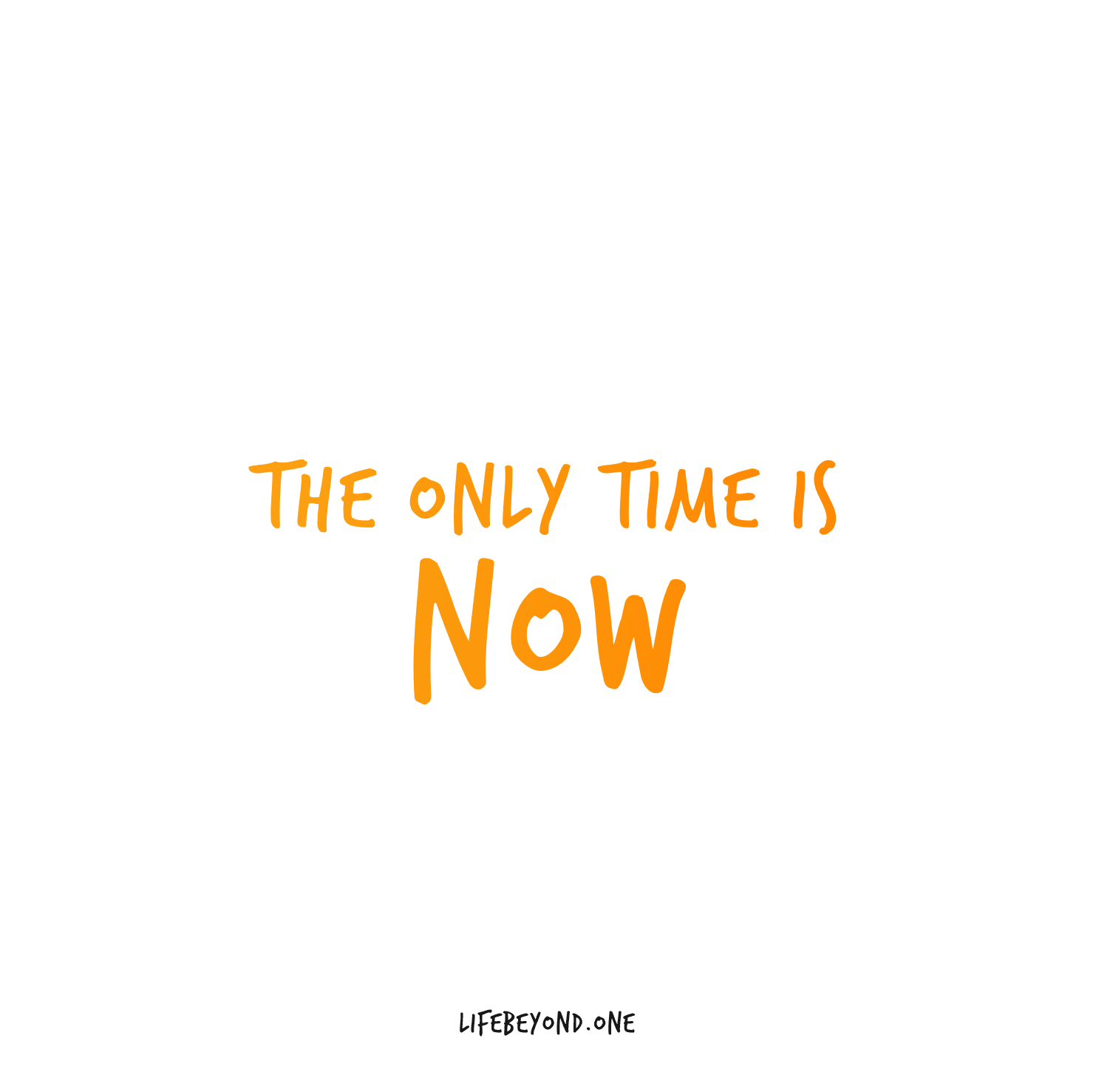
This research phase is meant to unearth data and information about the Self — individual or organizational — in relation to the goal of defining Purpose.
Step 1: History & Roots
We begin by examining the inheritance, cultural context and family X childhood dynamics that shaped you (or in the context of an organization: that shaped the founder or founders). In a few (3) short sentences, describe:
• Inheritance: What kinds of traits, talents, habits, skills, values and beliefs are typical in your family, as far back as you can look?
• What is the cultural context that you grew up in? What types of traits, beliefs and habits has your cultural background instilled in you? Check out Hofstede Group’s website for insights on cultural values across the globe, it’s interesting and might be useful.
• What was the dynamic in your family and close surroundings like when you were growing up and how has it affected you as a person?
• Looking at all of the answers to the above questions, what are you grateful for? What do you choose to take with you into the future, and what not?
Additionally, and if you’re up for it, answer the following questions for extra insight:
What were your five biggest wins and your five biggest setbacks in life? What did they teach you?
- How do you feel after answering these questions?
Step 2: Past & Present self-reflection
For this part we collect as much Emotional/Self-reflective data and information as possible concerning our past and present Self.
Questions you may pose yourself to obtain information for this block:
• What made me feel happy and/or energetic when I was younger?
• What was I good at, at a young age, relative to others?
• What did people appreciate about me in the past?
• What negative thoughts, feelings and views concerning myself was I taught by people and experiences in the past?
• In what activities, skills or areas of knowledge did I usually perform less than others?
• What activities, skills or areas of knowledge made me feel bored, frustrated or stressed in the past?
• What positive thoughts, feelings and views about myself was I taught by people and experiences in the past?
• What activities or actions made me feel good about myself in the past?
After answering these questions for yourself as a youngster or fledgling company or brand, answer them again for yourself now — as in “what made me feel happy and energetic over the last 6 months?” and so on.
- How do you feel after answering these questions?
Step 3: Asking for input
Next, use the following questions about your past and present self with others. Set up a meeting with your a trusted friend, coworker, or even your spouse — your Peer2Peer coach — to discuss the questions, or alternatively answer these for each other via e-mail.
Additionally, ask five to ten other stakeholders who might have useful insights about you to answer the questions for you as well.
For your personal life, this could be a parent, or a sibling; a close friend or schoolmate. For your business or professional life; this could be former or current coworkers (it can be very interesting to see how someone from another team or department that you trust, views you).
As an entrepreneur or leader of a brand, I would certainly advise you to check with one or two business partners and definitely two to three customers.
Past & Present Self: Social Data
Questions you might pose to relevant stakeholders to obtain information for this block:
• What makes me seem happy and energetic to you?
• What do you feel I excel at?
• What qualities, skills, knowledge, attitudes and actions of mine did you appreciate in the past six months?
• What is a self-defeating statement or implied negative view of self you have seen me make or display about myself in the past six months?
• In what activities, skills or areas of knowledge do I usually perform less than others?
• What positive statements or implied positive view of self have you seen me make or display about myself in the past six months that you would agree with?
• What have you seen me do or talk about that seems to make my eyes light up?
After asking these questions for yourself now, ask them once again for yourself as a youngster or fledgling company or brand — as in “what made me seem happy and energetic in the past?” and so on.
- How do you feel after receiving the answers or even just asking or discussing these questions?
Step 4: Hard data
Past
Here we’re looking for hard, measurable data that you can retrieve (from memory or actual records) that can tell you anything about yourself; your skills, talents, traits, and weaknesses. Answer as many of the questions below as you can, in no more than a few (3) short lines.
• What were the highest and lowest grades you got in school? For what kinds of subjects?
• How long did it take you to get different jobs or clients/customers you’ve had? How many different applications/sales processes did you go through?
• How much money did you make in different jobs, in how many hours?
• How did you score in intelligence, aptitude and personality tests in the past?
• How did you fare in other KPIs that are measurable?
Present
Here we’re looking for hard, measurable data that you can retrieve that can tell you anything about your current self; your skills, talents, traits, and weaknesses in the present. Answer as many of the questions below as you can, in no more than a few short lines.
• What is your Personality type (you can use the Myers-Briggs test or Big Five Personality test for this insight), and what does this mean to you?
• What is your Style of Interpersonal Communication (you could use one of the available DISC questionnaires for this) and what does this mean?
• What other insight about your personality or talents do you find important, and how do you score (IQ test, Aptitude test, Spiral Dynamics, other…)?
I recommended you do one to three tests like these yearly, to be able to compare yourself to your former self. It helps redefine who you are, your purpose et cetera.
- How do you feel after these questions?
Step 5: The My Ultimate Self, My Hero — exercise;
For this exercise, imagine the following: The day is today and you’ve just received a phone call: a close friend bought a lottery ticket to your name and you have been selected the winner of a jackpot of 90 million dollars/euros, to be paid in monthly payments starting next month until 90 years from now. You never have to work anymore, and any and all restraints on your time are now lifted, forever.
- What would your life look like after a month, a year, ten years?
- What would you be spending your time on (what would a typical Tuesday look like?), and why?
- What value would you create for others? Which of your talents, skills and insights would you be using and growing?
- What effect would it have on your closest relationships, how would they evolve?
- Where would you live, and what would your surroundings look like?
- What would you look like?
- What would the most inspiring, proud-inducing statement be that the Ultimate version of yourself, your own Hero, would have written on their tombstone?
Bonus: The Looking at My Shadow, Looking at My Light — exercise
For this exercise, we’re going to be tapping into the negative events and feelings, frustrations that shaped us early in life, and flipping them upside down. What triggered you to become the unique individual you are, with the unique motivations, talents; weaknesses and superpowers that make you, you?
- What frustrated you most about life and/or the world when you were a child or in adolescence?
- What is a thing or what are traits that always made you feel different from everyone around you when you were younger?
- What is the main belief you have or had about yourself when you were younger, that is limiting you?
- What skills, interests and typical responses did you evolve or develop to cope with difficult situations?
Our main weaknesses often translate to our primary strength, like the two sides of a coin. For me, it’s the fact that I always want to keep digging, thinking, and digging until I find the ultimate answer to something — this is something that has held me back from moving ahead in life as fast as others, but is simultaneously one of the main things I bring to the table in terms of value for others. I come up with awesome and well-thought-out strategies, solutions and answers because I take the time.
- What is your main weakness, and how does it translate to a primary strength of yours?
- What is or are your main Superpower(s)?
Don’t worry about synthesizing, we’ll do that next week. This first phase is all about thinking, speaking, and getting the first answers to these questions down. We’ll summarize our insights in a Purpose statement, a Vehicle and a Next Step in the next phase and next week. That’s also when you’ll construct your Legend Story.
For now, just relax, unwind, and have a great weekend. You’ve certainly earned it. Bookmark this page in your browser and come back next week!

Phase 2: Constructing your Purpose Story
Now let’s get to work. This is what we’re going to be doing in this phase (or this week):
- How to tell your Legend Story: with the Purpose Aligned Legend Storytelling framework. We will use all of the input gathered in the previous phase and a nine-question framework for Brands and Inspired Humans to tell their Legend Story — to help you create yours.
- Asking your stakeholders; your P2P coach and other people who matter to you for input or feedback (or better yet, ‘feedforward’) and use it to your advantage and theirs.

Finding or redefining your Purpose and Legend Story in five steps
This is what we’ll be doing this week:
Step 6: Review your notes
Review your answers from last week. Read through your notes and answers, and circle, underline and connect concepts, words that stand out to you. Then, leave these notes for a day.
Step 7: Write your Purpose Story
*Cue drumroll*. Today you’re going to write your actual Purpose or Legend Story. Relax, you’ve done all you need to do to set yourself up for a great first draft. And; it’s only a first draft that we’re looking for today. Search for consistency in your story, search for meaning, and search for feeling. In your gut.
Based on your review of your notes from last week; Write your (Personal) Brand/Legend story. Here are the nine steps you will need for that:
- Origin: What is your background and how did it shape you?
- Value: What is it you do and how do you add value [what is your Vehicle]?
- Purpose: Based on the above to answers, go down one layer deeper in your notes from last week. Why do you exist and Why do you do what you do [what do you want to change in the world]?
That’s it. Answer these questions in no more than 5 lines of text each. And you’re done: This is your first draft for your Purpose Story.
If you’re looking to create a broader (personal) Brand Story, you can elaborate using the following six questions:
4. Partners: With whom do you collaborate [coworkers, business partners; teammates, your significant other] in what you do, and why these people?
5. Customers/stakeholders: Who do you primarily create value for, and why them [clients, audience, or: coworkers, business partners, teammates, your significant other and children]?
6. Values and communication: How do you work [what are your five or six core values] and how do you communicate (tone-of-voice, visual aspect)?
7. Responsibility: How do you take social and/or environmental responsibility?
8. Vision: How do you see [the future and] yourself in the future?
9. Call-to-action: How can people help you help them?
Answer these questions in preferably no more than five lines of text each, for your first draft.
Got your first draft done? Awesome. You can edit it later. That’s actually what you’ll do tomorrow. For now, pat yourself on the back, have a drink, or do both. Be proud of yourself for a moment!
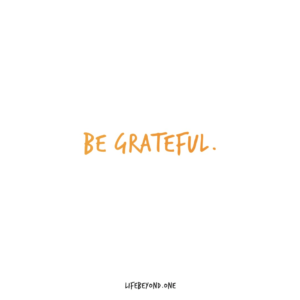
Step 8: Editing and feedback
Go back to the Purpose or Legend Story you wrote yesterday. Edit your first draft critically, checking the copy and gut-checking yourself at the same time. Is it correct? Is it authentic? Is it really who you are and who you believe you can realistically become?
After this, ask for feedback from no more than five people in your closest circles — including your Peer2Peer coach. It would be great if you could ask feedback from about two extra people — outside of the people that helped you answer questions about yourself or your business in week 2.
Take the feedback at face value for now, evaluate it later. When and where possible and necessary, clarify what you are given by asking questions.
Step 9: Adjusting your Purpose/Legend story
Take the feedback you received yesterday and analyze it. What points stand out? Which points make you feel something? Why is that; is it because the feedback or critique you’ve gotten is right on the money or because it’s exactly missing the point of who you truly are and/or who you believe you can grow to become?
After the analysis of each point, adjust your Legend Story where you deem necessary. You’re almost done.
Step 10: making your Purpose Story come alive — and keeping it that way
Great. So, you’ve done the work of really going deep inside and looking at yourself, to find out where you truly add value, and what the underlying drivers are for the way you do that.
And you’ve created and validated the Story to help you grasp, remember, and communicate these truths about yourself or your business. Awesome.
The last, and crucial step is this: how to keep your Purpose-driven Story alive. What you want to do is the following:
- Plan and execute a mindful self-care routine
No growth, no development, and no serious progress of any kind without a happy, healthy you. Or healthy, happy people in general.
Figure out what time you need for a healthy mind and a healthy body, and a sense of self-direction, and plan this time. Read more on self-care, here. If you are a leader in business, think about what the Purpose Story you have created means for the way you treat your people. What does this mean for the way you do People Development and HR?
- Purpose-align relationships and communication
Look at your social circles, and the personal or business relationships you currently have — and those you would like to have. Talk to people around you about your Purpose and the Story you envision for yourself or your business. Align your communication, relationships and time spend with your Purpose and Values. - Purpose-align time-spend and project prioritization
Align the time you spend at work and on projects according to your Purpose and Values. See what else you can delegate, outsource, or automate. - Continuously re-align your calendar, habits, and time-spend
Plan your calendar such that you spend time on what matters, including if you will, Netflix, TikTok, and chill. And plan when to evaluate and revise your Purpose, values, and time-spend at set moments in time.
And that’s it. I truly hope this will help you get a much clearer view of what you are about, or what your business is about. I know a lot of people who have benefited greatly from the above steps, I’d love to hear from you how they’ve helped you.
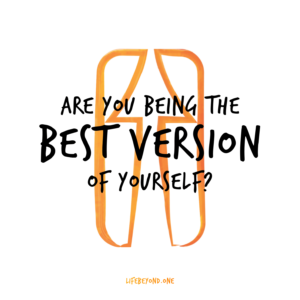
The above has been an excerpt from my upcoming book. I’ve just finished writing it and the working title is: “Legend Storytelling: How to Find, Communicate and Live your Purpose”. I’m also starting a trial with a small group of people who will be helping me evaluate and improve the 30-day Storytelling journey included in the book.
If you’d like to be updated when the book becomes available, be sure to sign up for my newsletter on my website. If you want to be included in the 30-day Storytelling journey, connect with me here.
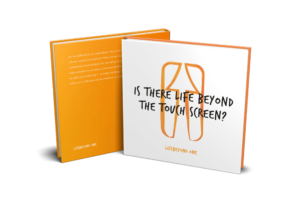
My previous book “Life Beyond the Touch Screen” is available here as an e-book or paperback. It’s a meditational booklet designed to increase our consciousness around the impact of digital technology on our lives as individuals, in organizations and society. A reminder to choose. Take back your energy, focus, and time: get your copy now.
For a limited offer use code MentalHealthFocus2020 on my website www.lifebeyond.one for a 15% discount on all items.
FAQ
What Does It Mean to Find Your Purpose?
Finding your purpose means discovering a sense of meaningful direction in life, which aligns with your values, passions, and strengths, and contributes positively to yourself and others.
Why Is Finding Your Purpose Important?
Finding your purpose is important as it can provide clarity, motivation, and fulfillment. It guides life decisions, shapes goals, and gives a sense of meaning and direction.
How Can Reflection Help in Finding Your Purpose?
Reflection helps by allowing you to consider your past experiences, values, and what truly brings you joy or fulfillment. It involves introspection about what matters most to you.
What Role Do Personal Values Play in Finding Your Purpose?
Personal values are central to finding your purpose as they define what you stand for and believe in. Aligning your actions with these values can lead to a more purposeful life.
Can Passion and Interests Guide You to Your Purpose?
Yes, exploring your passions and interests can guide you towards activities and fields that are meaningful and enjoyable to you, pointing towards a potential purpose.
How Can Setting Goals Help in Finding Your Purpose?
Setting goals provides direction and milestones that align with your purpose. Achieving these goals can bring a sense of accomplishment and clarity about your life’s direction.
What Is the Importance of Experimenting and Trying New Things?
Experimenting and trying new things opens up opportunities to discover what resonates with you, potentially revealing paths and activities that align with your purpose.
Can Helping Others Lead to Finding Your Purpose?
Helping others can lead to finding your purpose as it often brings fulfillment and a sense of contribution, which may align with your deeper values and life goals.
How Can Talking to Others Help in Finding Your Purpose?
Conversations with others can provide different perspectives, inspire new ideas, and offer insights into your strengths and potential paths, aiding in the discovery of your purpose.
Is It Normal for Your Purpose to Evolve Over Time?
Yes, it’s normal for your purpose to evolve as you grow and experience life. Changes in circumstances, interests, and insights can all lead to a shift in your sense of purpose.
How Can Mindfulness and Meditation Aid in Finding Your Purpose?
Mindfulness and meditation can help you clear mental clutter, focus on your inner thoughts and feelings, and gain clarity about what truly matters to you, aiding in the discovery of your purpose.
What’s the Significance of Understanding Your Strengths and Weaknesses?
Understanding your strengths and weaknesses can guide you towards areas where you can excel and feel fulfilled, helping to identify a purpose that leverages your natural abilities.
How Do Life Experiences Influence Your Purpose?
Life experiences, both positive and negative, shape your perspectives, teach valuable lessons, and often reveal what is truly important to you, influencing your sense of purpose.
Can Travel and Exposure to Different Cultures Impact Your Purpose?
Travel and exposure to different cultures can broaden your horizons, expose you to new ideas and ways of living, and inspire you to find a purpose that resonates with your expanded worldview.
How Can Journaling Help in Finding Your Purpose?
Journaling allows you to record and reflect on your thoughts, experiences, and aspirations, providing insights into your passions and potential paths to your purpose.
What Is the Role of Professional Guidance or Counseling in Finding Your Purpose?
Professional guidance or counseling can provide objective insights, help you navigate challenges, and offer tools and strategies to explore and clarify your purpose.
How Can Volunteering and Community Service Reveal Your Purpose?
Engaging in volunteering and community service can reveal what you are passionate about and what kind of impact you want to have, which can be key indicators of your purpose.
Is It Beneficial to Take Personality or Career Aptitude Tests?
Personality or career aptitude tests can offer insights into your traits and preferences, potentially guiding you towards fields or activities that align with your inherent tendencies and purpose.
How Does Overcoming Challenges and Adversity Shape Your Purpose?
Overcoming challenges and adversity often leads to personal growth, resilience, and a clearer understanding of what is truly important, helping to shape and refine your purpose.
What’s the Importance of Patience in the Process of Finding Your Purpose?
Finding your purpose is often a journey that requires patience. It involves exploration, self-reflection, and sometimes trial and error, and it may evolve over time as you gain more life experiences.
How Can Educational and Work Experiences Influence the Discovery of Your Purpose?
Your experiences in education and work can reveal what you enjoy doing, what you’re good at, and where you can make a meaningful impact, guiding you toward your purpose.
Can Creative Pursuits and Hobbies Help in Finding Your Purpose?
Engaging in creative pursuits and hobbies can uncover hidden passions and talents, providing a sense of joy and fulfillment that might point you towards your purpose.
What Is the Role of Risk-Taking in Finding Your Purpose?
Taking risks can lead you out of your comfort zone, expose you to new experiences, and help you discover what truly matters to you, which is essential in finding your purpose.
How Does Building and Leveraging a Network Aid in Finding Your Purpose?
A diverse network can provide different perspectives, opportunities, mentorship, and support, all of which can be crucial in exploring and realizing your purpose.
What’s the Importance of Setting Boundaries in the Process of Finding Your Purpose?
Setting boundaries is important to ensure you focus on what aligns with your values and goals, and avoid getting sidetracked by things that don’t contribute to your purpose.
How Can Reading and Self-Education Contribute to Finding Your Purpose?
Reading and self-education can expand your knowledge, expose you to new ideas, and inspire you to explore paths you hadn’t considered, aiding in the discovery of your purpose.
Can Personal Crises or Major Life Changes Lead to Finding Your Purpose?
Often, personal crises or major life changes, though challenging, can bring clarity and a reevaluation of what’s important, leading to a deeper understanding of your purpose.
How Should You React to Feedback or Criticism While Searching for Your Purpose?
Constructive feedback and criticism can provide valuable insights into your strengths and areas for growth, helping you refine your path to finding your purpose.
What’s the Significance of Resilience in the Journey to Finding Your Purpose?
Resilience allows you to overcome obstacles and setbacks in your journey, helping you to stay committed to finding your purpose even when the path is challenging.
How Can Engaging in Reflective Practices Like Yoga or Nature Walks Help?
Engaging in reflective practices like yoga or nature walks can provide the mental clarity, peace, and introspective space needed to contemplate and uncover your true purpose.